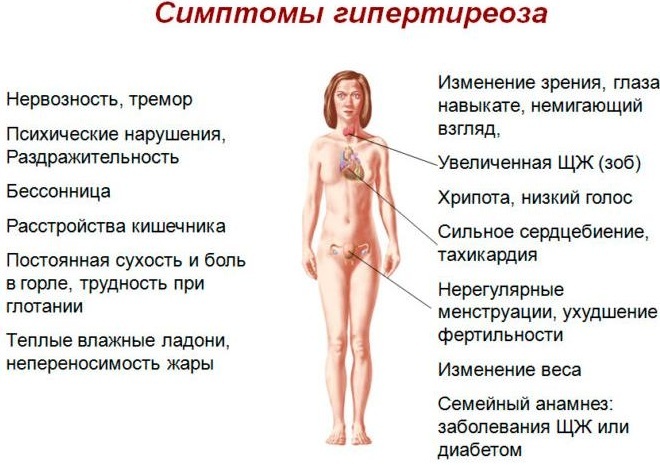Content
- Types of burning in the legs below the knee
- Etiology
- Physiologically caused causes in women, men
- Overwork
- Prolonged uncomfortable posture
- Sedentary lifestyle
- Wearing uncomfortable shoes
- Menopause
- Pregnancy
- Excess weight
- Stress
- Pathological causes of burning in the legs below the knee, additional symptoms
- Diagnostic methods
- Treatment
- Local medicines
- Systemic medicines
- Folk recipes
- Consequences if untreated
- Video about burning in the legs below the knee
Burning sensation in the legs is considered a common symptom among people of different ages. Often, the discomfort is localized below the knee, but it can spread to other areas as well. The reasons for the violation can be different, as well as the severity of the manifestation. To eliminate the burning sensation, it is necessary to identify the predisposing factor, which will allow you to choose the most effective therapy regimen.
Types of burning in the legs below the knee
Since burning is one of the symptoms, and not an independent disease, there is no approved classification of discomfort.
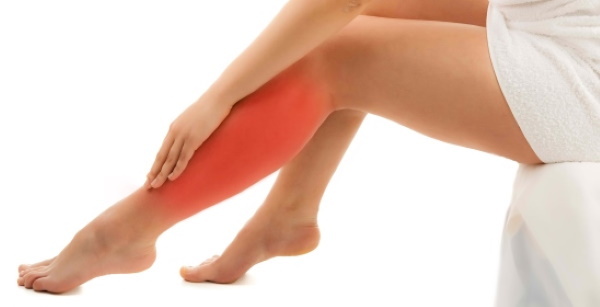
But doctors conditionally divide it into several types, depending on the frequency of occurrence and other nuances:
- Acute burning sensation occurs suddenly and is accompanied by accompanying symptoms, often after an injury. This type of disorder often develops in professional athletes.
- Chronic burning sensation in most cases is associated with a long course of any disease. It manifests itself in a subacute form and may not disturb the general condition of a person.
- The passing burning sensation is more often associated with physiological reasons, since it manifests itself for a short period and disappears after tissue repair.
- A permanent type of disorder is almost always the result of a severe course of the disease. Discomfort worries patients constantly, worsens the general condition, and can provoke complications.
Depending on the presence of complications, the symptom may be complicated or uncomplicated. In the first case, concomitant deviations from the extremities appear, in the second, the symptom acts as the only symptom.
Etiology
Burning in the legs below the knee (the causes of the disorder should be identified during the examination) can have a different origin. In most cases, the etiology is associated with damage to the muscle fibers of the lower leg, provoking spasm and severe pain. Gradually, the pain leads to the development of a burning sensation that spreads to large areas of the limb.

With the involvement of nerve endings in the pathological process, the symptom can manifest itself in an acute form, motor dysfunctions are observed. Often, the etiology is associated with vascular disorders, which is accompanied by impaired blood circulation and aggravated burning sensation. Depending on the origin, the root cause and the severity of the disease are determined.
Physiologically caused causes in women, men
Experts identify physiological reasons that do not belong to diseases, but can provoke a burning sensation in the lower leg area. Usually, such factors lead to the appearance of a passing symptom, which disappears after a certain period of time.
Overwork
Long-term physical activity often provokes discomfort in the limbs below the knee. This is due to muscle tension and tissue malnutrition as a result of pinching of nerve endings.
Patients whose professional activities are associated with a constant load on the limbs are more likely to talk about the appearance of a symptom. Discomfort disappears after a good rest. If this does not happen, the manifestation may be associated not only with overwork, but also with the development of a disease.
Prolonged uncomfortable posture
Many professions involve a long stay of a person in a certain position, which negatively affects the work of the musculoskeletal system. For example, surgeons, massage therapists, office workers, due to their activities, are forced to stand, sit or be in a different position for a long period of time.
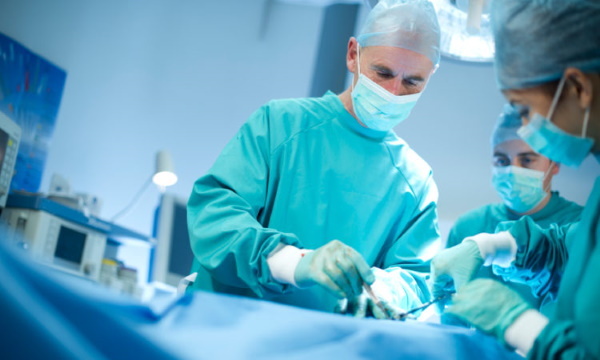
This is not always convenient, it provokes excessive muscle tension, pinching of nerve endings and complications from the articular joints of the limbs. As a result, a burning sensation is a natural physiological reaction of the body to the tension of muscle fibers. If the patient does not have any diseases, the discomfort disappears after a long rest. In the presence of pathologies, it can persist for a long period of time.
Sedentary lifestyle
Burning sensation in the legs can be localized below the knee, even when the patient is sedentary. The reason for the deviation is not always related to muscle tension. For example, with a prolonged stay in a horizontal position, compression of the tissues of the limbs in the lower leg area is possible, which provokes a burning sensation.
If the patient continues to lead such a lifestyle, not only the appearance of a burning sensation is possible, but also a violation of blood circulation in the affected area. This can lead to a deterioration in the condition of the skin and atrophy of tissues, muscles, nerve endings.
Wearing uncomfortable shoes
Legs below the knee can hurt even if uncomfortable shoes are worn for a long time. The burning sensation does not appear immediately, but with prolonged and frequent wearing of shoes. Most often, the symptom is observed in women who prefer to wear a high heel, which increases the load on the muscles of the lower leg.
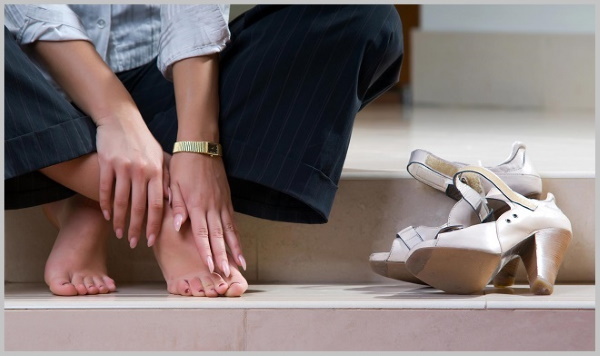
As a result, a burning sensation appears towards the end of the day, and can bother a woman for several hours. The symptom is especially acute in patients who have a history of vascular pathology of the lower extremities.
Menopause
Often, the climacteric period in women is difficult, accompanied by muscle pain and disorders of the internal organs and systems. Burning sensation in the limbs below the knee is not considered a typical symptom during menopause, but it can occur against the background of hormonal imbalance and deterioration of the muscles, nerves, and skin.
The manifestation is often short-term, disappears after a good rest. If a woman has peripheral vascular disease, burning may act as an additional symptom of the disorder.
Pregnancy
During the period of bearing a child, the load on the limbs increases, so discomfort from the legs is considered a natural reaction to physiological processes. With prolonged exertion, the burning sensation intensifies, pain and other symptoms may appear. After childbirth, the manifestations disappear. Often, during gestation, the discomfort is short-term, it does not always manifest itself, it disappears on its own.
Excess weight
Burning sensation in the legs below the knee (the causes of the symptom are not always associated with any disease) often worries people who are overweight. This is due to increased stress on muscles, blood vessels, and nerve fibers.
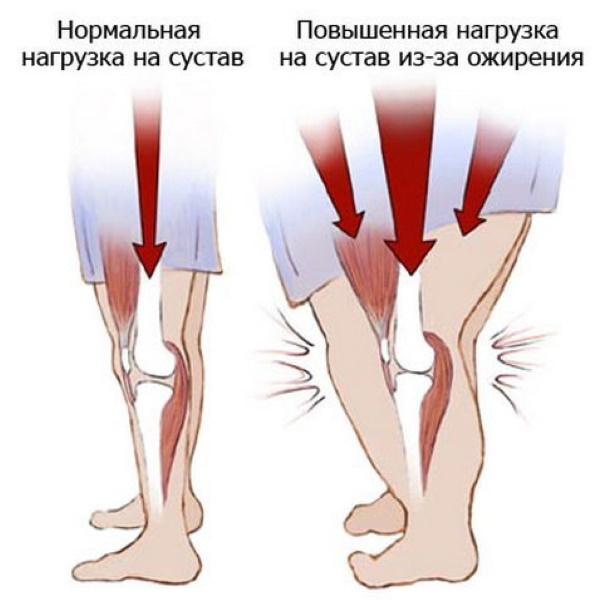
With excess weight, a burning sensation occurs as a natural reaction of the body. It may disappear and reappear with repeated excessive exertion.
Stress
The state of the central nervous system significantly affects the peripheral nerve tissues. With any neurological disorder, a burning sensation, tingling sensation and other symptoms may bother patients. After the normalization of the psycho-emotional state, the symptoms disappear on their own, but complications from the internal organs often develop.
Pathological causes of burning in the legs below the knee, additional symptoms
Symptoms are often associated with pathological causes, that is, the development of a disease.
The most common pathologies:
- Varicose veins complicated by thrombophlebitis. At the same time, patients experience a deterioration in the condition of the walls of the vessels of the lower extremities, the formation of blood clots on them and impaired blood circulation. As a result, the nutrition of muscles and skin worsens, which provokes a burning sensation. The disease often develops in women, accompanied by rapid fatigue, swelling of the extremities, especially in the evening. With the progression of the disease, a vascular pattern appears on the legs, and protrusion of large veins is often noted. Lack of therapy leads to the appearance of trophic ulcers.
- Obliterating endarteritis is also considered a common peripheral vascular disorder that worsens the state of the vascular wall, blood circulation in the lower extremities is impaired, up to necrosis fabrics. A burning sensation with such a disease appears often, in addition the patient is worried about severe pain, he tries to walk or stand less, pain is especially pronounced at night. Pathology is more often diagnosed in men.
- Diabetes often accompanied by deviations from the peripheral vessels, which can provoke a burning sensation and other symptoms. This is due to a deterioration in the condition of the vascular wall, a violation of tissue nutrition. Additionally, patients talk about impaired wound healing, swelling, itching and dryness of the skin. In laboratory diagnostics, fluctuations in glucose indicators are noted.
- Rupture of muscles and ligaments usually provokes pain and burning. Damage often occurs in athletes, as well as in patients whose professional activities are associated with increased loads on the limbs. There is edema in the affected area, the patient cannot fully move, general weakness is possible.
- Contusion of tissues often leads to discomfort and severe pain. In the affected area, redness is present, which gradually turns into a hematoma. The patient's movements are limited, there is weakness, an increased load on the healthy limb.
- Knee pathologies may be accompanied by complications in the form of burning below the knee. With arthritis, the condition is aggravated by swelling of the articular joint, pain when bending the limb, and an increase in body temperature. With arthrosis, degenerative-dystrophic changes develop, which also provoke pain and accompanying symptoms.
- Diseases of the spinal column can negatively affect the condition of the limbs, which is associated with damage to the nerve endings that innervate the tissues of the legs. Burning sensation usually occurs with exacerbation of the underlying disease as an additional symptom.
- Gout is a common cause of symptoms. Additionally, patients note joint deformity, pain, especially at night, an increase in body temperature and a decrease in mobility.
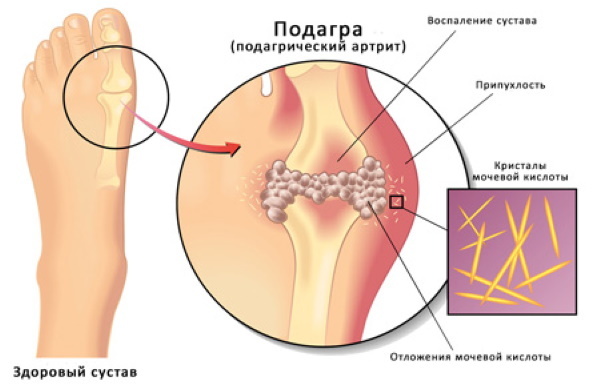
Often, a patient has several pathologies in the anamnesis at once.
Diagnostic methods
Burning sensation in the legs below the knee (the causes of the onset of symptoms are often associated with the progression of some diseases) should not be ignored, since the manifestation may be a sign of the development of a serious violations. Specialists prescribe a diagnostic examination that involves the use of several methods.
| Method | Description |
| Inspection and questioning | The first stage of diagnosis, which allows you to assess the patient's condition, clarify the alleged cause of the burning sensation and the presence of accompanying symptoms. During the examination, the specialist not only assesses the skin, but also palpates the affected area, listens to complaints, finds out the conditions of their appearance, duration and accompanying violations. |
| General and biochemical blood test | The standard diagnostic step, which involves the study of blood in the laboratory after taking it from a vein. The method helps to assess the general condition, the work of internal organs, to identify signs of inflammation, complications. |
| X-ray | This method is used when the patient has symptoms of pathologies of the spinal column or joints. Radiography helps to determine the degree of progression of the disease, the presence of complications. |
| Doppler ultrasonography | A diagnostic method in which, with the help of a special device, you can study the vessels of the lower extremities. The method is used when signs of thrombophlebitis, varicose veins, and other vascular diseases appear. Based on the diagnostic data, a further examination scheme is determined. |
| MRI | An effective method that is used when other methods do not bring a pronounced result, the doctor cannot identify the cause of the burning sensation. Usually, diagnostics helps to clarify the provoking factor and accompanying deviations. |
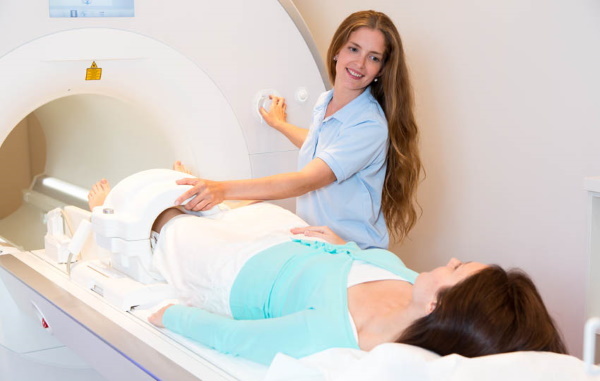
After receiving the results of diagnostics, the therapy regimen is determined for each patient individually.
Treatment
Depending on the cause of the disorder, the specialist determines the tactics of therapy, specific medications and the duration of their use.
Local medicines
Means for topical application are highly effective when the burning sensation is provoked by trauma of varying severity, varicose veins and some joint pathologies.
Most often, the following medications are prescribed:
- Troxevasin helps to improve the condition of the walls of blood vessels, relieves swelling, is prescribed for thrombophlebitis and varicose veins. If patients have a burning sensation and other symptoms, the course lasts up to 2 weeks. Every day, the product is applied in a thin layer 2 times a day, gently rubbed into the skin with massage movements. If necessary, therapy can be repeated and combined with systemic medications.
- Voltaren Emulgel has anti-inflammatory, analgesic properties, helps relieve burning and swelling. For injuries of various origins, the gel is used to eliminate local reactions. It is applied in a thin layer to the affected area 2-3 times a day. The duration of therapy is 5-7 days. It is allowed to repeat the course after consulting a doctor.
- Lyoton has pronounced anti-edema properties and has a positive effect on the walls of the vessels of the lower extremities, it is considered effective in the presence of signs of varicose veins. The drug is highly effective for burning and the presence of other symptoms, prevents the progression of the disease. The medicine is applied to the skin in a small amount 1-2 times a day, and the duration of the course is 2 weeks.
- Heparin ointment also prescribed for the diagnosis of thrombophlebitis and varicose veins. The drug has blood thinning properties, improves the condition of blood vessels. Its use allows you to eliminate the burning sensation. The ointment is applied in a thin layer to the skin of the extremities from 1 to 3 times a day. The duration of the treatment course is 10 days.
- Nise gel It is indicated for burning sensation that occurs against the background of trauma, muscle sprains, ligaments. Apply the gel in a thin layer 2 times a day, the duration of application depends on the degree of tissue damage, but usually 5 days are enough.
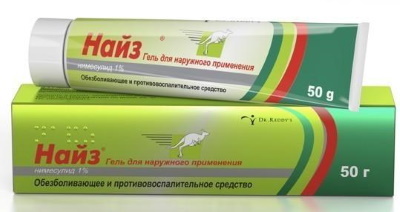
External agents are used in combination with systemic medicines to improve the effectiveness of treatment.
Systemic medicines
Burning sensation in the legs below the knee (the causes of discomfort must be determined by a doctor in order to prescribe the correct treatment) is treated not only with the help of local remedies. Systemic medications help improve the effectiveness of therapy, but the specific medication is determined by the doctor after examination.
Effective system tools:
- Latren indicated for peripheral vascular lesions, spasms and other diseases. The drug helps to expand blood vessels, improves blood circulation in tissues, eliminates burning sensation if it is caused by a vascular disease. The solution is administered intravenously using a dropper in pure form, 200 ml at a time. The procedures are carried out daily, the course consists of 10 infusions.
- Troxerutin prescribed simultaneously with the external form of the drug. Capsules are highly effective if the symptom is provoked by varicose veins, thrombophlebitis. Capsules are taken 1-2 times a day for 2 weeks.
- Normal also indicated in the diagnosis of thrombophlebitis and similar diseases. The medicine contains an effective ingredient in the composition, helps to eliminate discomfort, swelling, and strengthens the vascular wall. Take 1 tablet 3 times a day, treatment lasts from 2 to 4 weeks.
- Naklofen has analgesic and anti-inflammatory properties. It is used not only for burning against the background of trauma, but also in the case of joint pathologies. The drug is administered intramuscularly at 3 ml per day, treatment lasts no more than 5 days.
- Dexalgin indicated for severe pain and burning after injury. The drug is administered intramuscularly, 2 ml at a time. In most cases, use within 3 days is sufficient.
- Teraflex used for burning, which is provoked by degenerative joint pathologies. Tablets are taken orally 1 piece 2 times a day, the duration of the course is 2 months. The tool stimulates the restoration of cartilage tissue, prevents the progression of the disease.

The dosage and duration of therapy for each patient is determined individually. Other medications may be included in the course of treatment if the patient has complications. There is no standard scheme for everyone.
Folk recipes
Alternative medicine prescriptions do not help manage symptoms if they are pathological. Some home remedies can provide some relief.
Baths with a decoction of oak bark help to eliminate heaviness in the limbs, swelling:
- For 1 water, you need to take 50 g of dry crushed bark, cook for 10 minutes, leave for 2 hours.
- Filter the finished product, add 2 liters of cool water.
- Pour the composition into the pelvis and keep the limbs in it for 20 minutes.
- Repeat the manipulation for 10 days in a row before bedtime.
Compresses with nettle infusion are also considered effective:
- To obtain the infusion, add 20 g of dry nettle to 500 ml of boiling water, leave for 1 hour.
- After that, the agent must be filtered, moistened with gauze and applied to the affected area for 2 hours.
- It is necessary to repeat the procedure for 5-7 days in a row.
Consequences if untreated
In the absence of therapy, the most common consequence is the progression of the pathology.
The development of other complications is also possible:
- The spread of symptoms to healthy areas.
- Dysfunction of the articular joints.
- Limitation of mobility as a result of severe discomfort.
- The appearance of trophic ulcers on the limbs.

- Tissue necrosis as a result of the progression of vascular pathologies.
Complications can be prevented with the help of correct and timely treatment. Burning sensation in the legs, localized below the knee, can occur in patients as a result of various factors. The reasons are identified by the doctor during the examination, which makes it possible to prescribe the most effective treatment.
Video about burning in the legs below the knee
Causes of burning feet:

